Today’s post is all about refurbishing a dresser to achieve a natural, aged wood look:
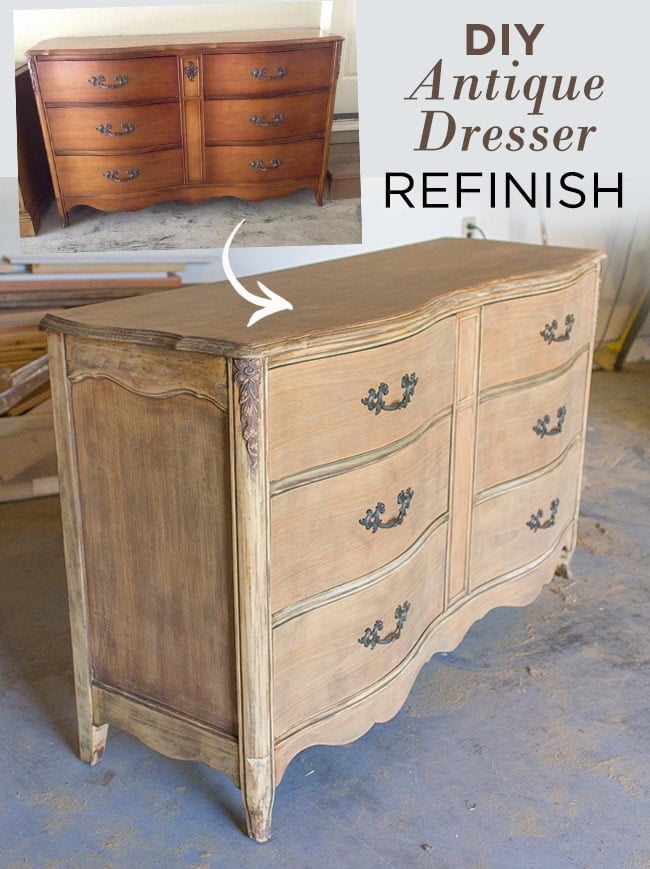
I’d been stalking every local thrift/antique/furniture store and local online sale sites looking for the perfect antique dresser to refinish. And then, last week, it came out of nowhere:
It was just what I had envisioned. And it was only $90! I hit the jackpot. An hour after I spotted it online it was in my garage and disassembly had begun.
While the style/shape/size were perfect, I wasn’t a fan of the finish. I don’t mind warm wood tones, but this thing was a very outdated shiny reddish-yellow hue that would never work for our style.
Warning: this project was very time consuming + labor intensive, and was completed over the course of a week as I couldn’t handle more than a few hours at a time.
The dresser was in pretty decent shape, but there were lots of very obvious scratches:
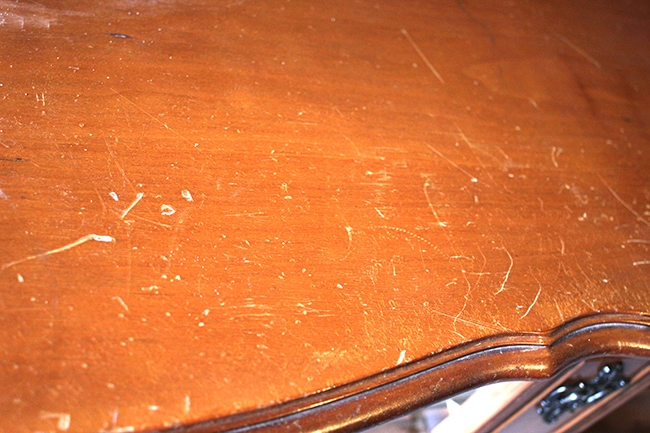
I had planned on sanding it down to the bare wood so this didn’t matter at all.
Jump to:
Step 1: Strip the paint or vanish
The dresser had thick layer of varnish so that had to go first. Instead of sanding it away (which would quickly clog up the sandpaper), I grabbed a hand scraper and got to work.
So very tedious.
I finally decided I had enough and busted out the paint stripper. I picked up a new can of liquid stripper (on the right) to try out, and it was worthless. Stick to the paste/gel!
Here’s the gel, doin’ it’s thing…
It makes scraping much easier, but it also doesn’t take up as much so I was still left with the reddish stain (whereas the scraper alone could get down to the bare wood).
And the drawers…
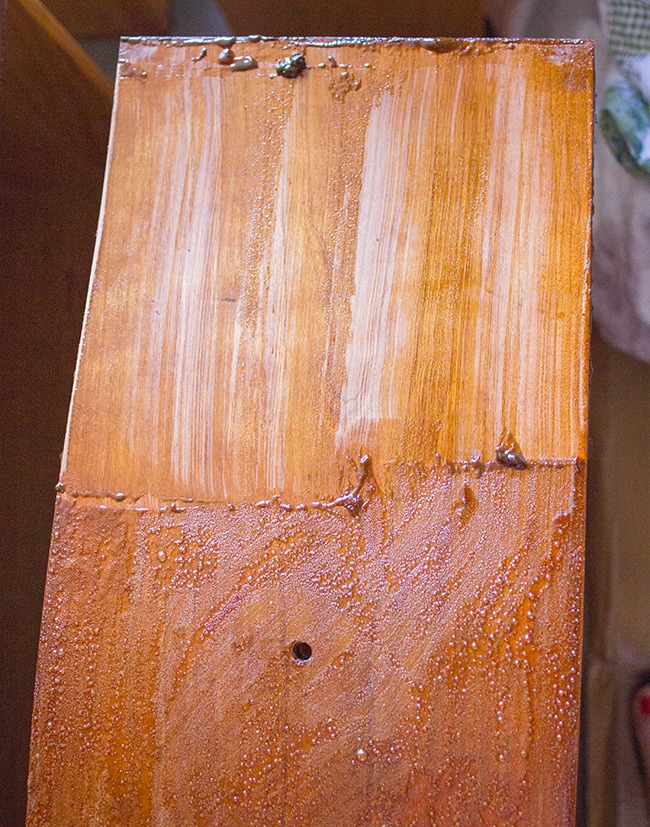
Oh yeah, stripper is probably the messiest stuff you’ll ever work with.
Here’s all of the drawers, de-lacquered:
The sides of the dresser were a huge pain. The wood was different than everywhere else and it did not want to let go of the varnish, even after two coats of stripper.
Mid-progress… bear in mind it was also 100° in this garage every afternoon. I had old sticky paint stripper and sawdust stuck all over me the whole time (so glad this project is over).
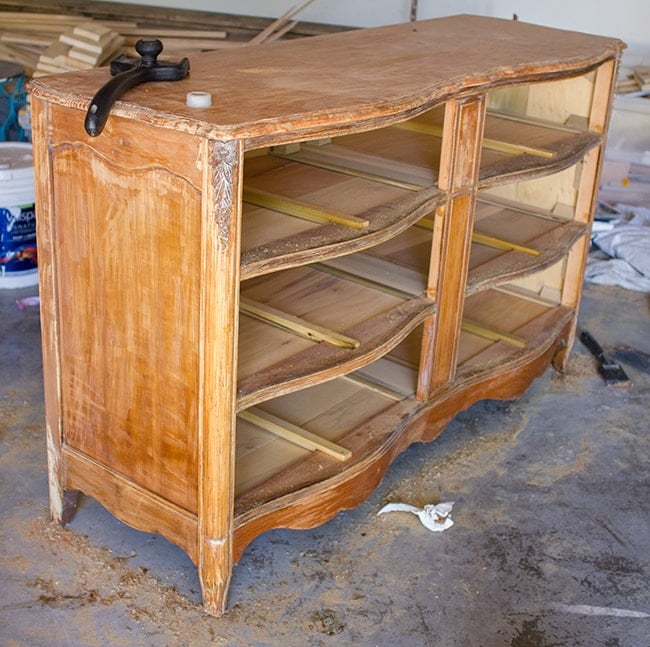
Step 2: Sand
After several days, I had finally all of the varnish removed and it was time to start sanding.
But first I used my scraper to roughen things up a bit and give it that weathered look.
As soon as the sandpaper hit the wood, I started to see the light at the end of the tunnel. It really diminished the old red stain.
Ahh, fresh bare wood!
Looking much better. The legs and trim pieces were different types of wood than the sides, top and drawer fronts so they sanded down to a nice colorless wood, while the rest retained most of its natural red tone, which was a little frustrating.
Step 3: Stain to desired color (optional)
After I deemed it sufficiently sanded, it was time to stain. I used a concoction of dark walnut, driftwood, and weathered gray and began to apply….
And I was not a fan.
I thought the gray would combat the red tones, but instead it intensified them and made everything pinkish looking. Huge fail.
All I could do was sand all the stain off and try again. I was a few hours into it, and then tragedy struck…
It was working overtime for this project and just couldn’t handle the pressure any longer.
So I upgraded to a Mouse sander:
Seriously, I’m kicking myself for not getting one of these earlier. It’s night and day from the old hand sander—I was blown away at how well it worked, especially for this project where there are so many small crevices and detailed areas where the other sander just couldn’t cut it.
Tip: an orbital sander is even better to cover large areas quickly.
Finally things were starting to look up, and I was able to finish sanding all that stain off in no time.
Knowing that any stain I add would bring out the red again, I decided to go au natural and embrace the mostly-bare wood tones.
Step 4: Seal the wood (optional)
But I still wanted to seal it somehow… so I picked up this wax, hoping for a coating that wouldn’t be visible so I could retain the old weathered look.
Sadly, that wasn’t the case.
You see the little orange spot on the corner? That’s after buffing out a bit of wax, and it turned it red again. It doesn’t look so bad in this photo, but trust me, it was right back to where I started and I didn’t want to go down that road again.
So I’m leaving it natural. Any dings and scratches will just add to the character. Amen to farmhouse style.
Tip: If you choose not to seal the bare wood, be careful not to spill any oils/liquid on it, as it will stain the surface.
I reused the original handles as I don’t mind them, but I’m open to swapping them out. It might be a little tricky since the drawers are curved though.
Dresser reveal
Update: You can see how the dresser looks in our completed master bedroom makeover!
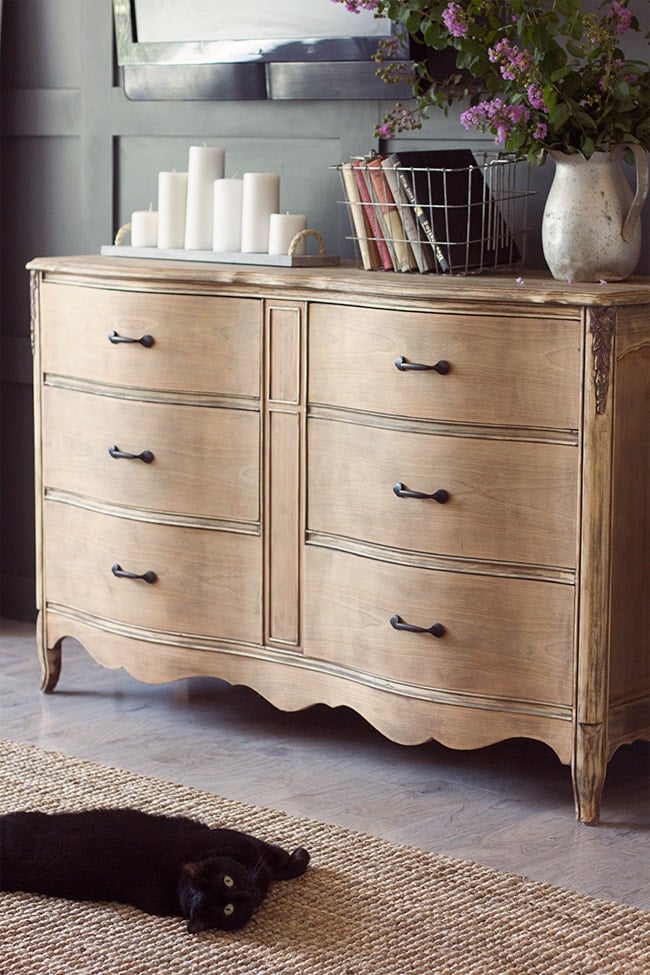
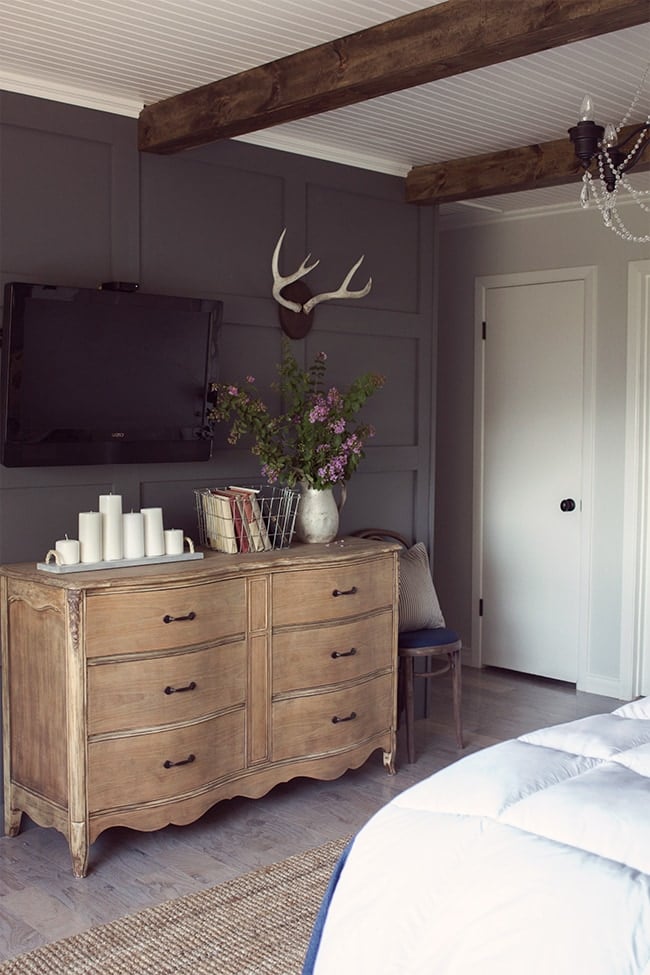

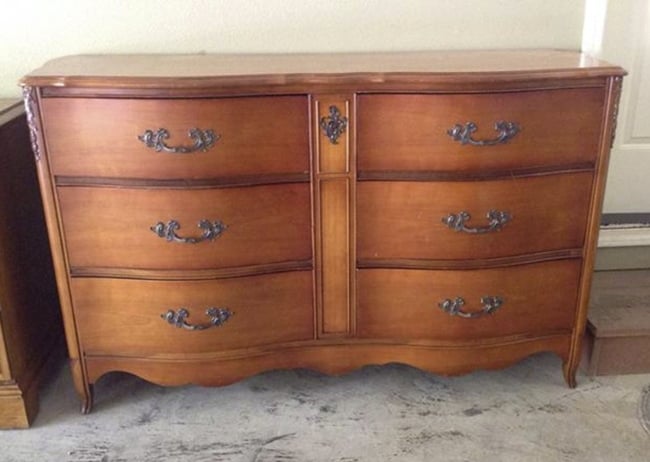
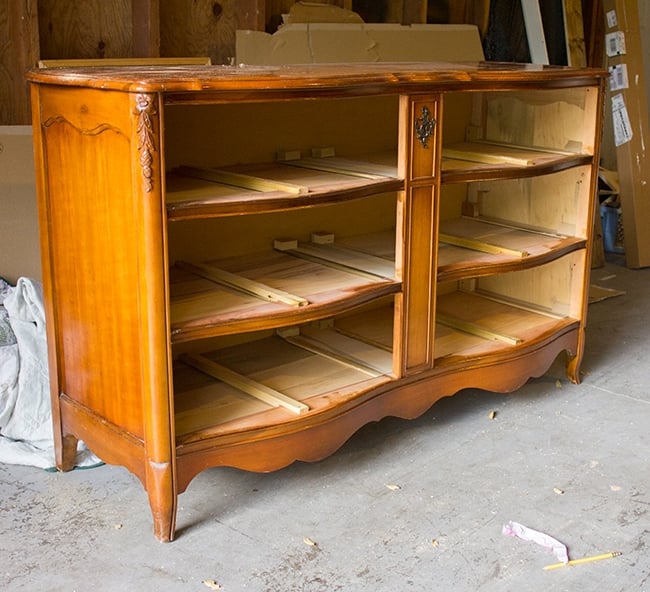
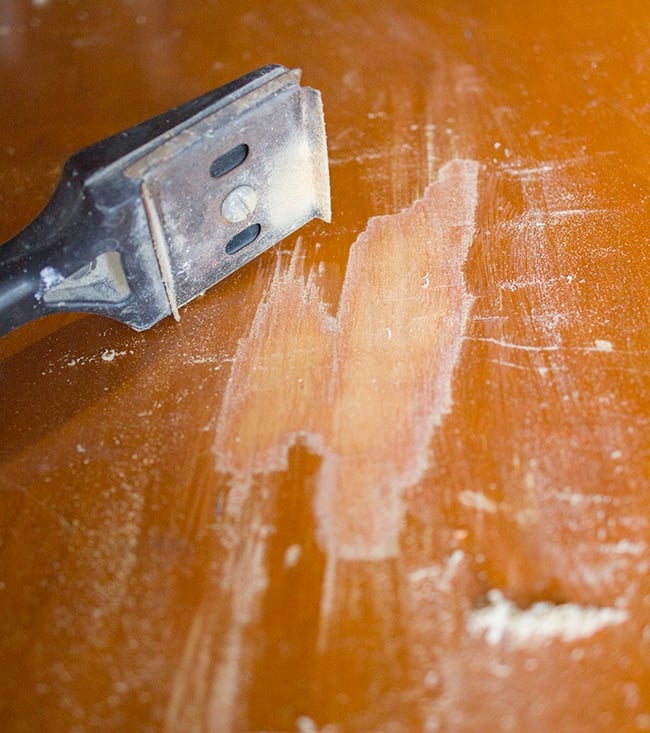
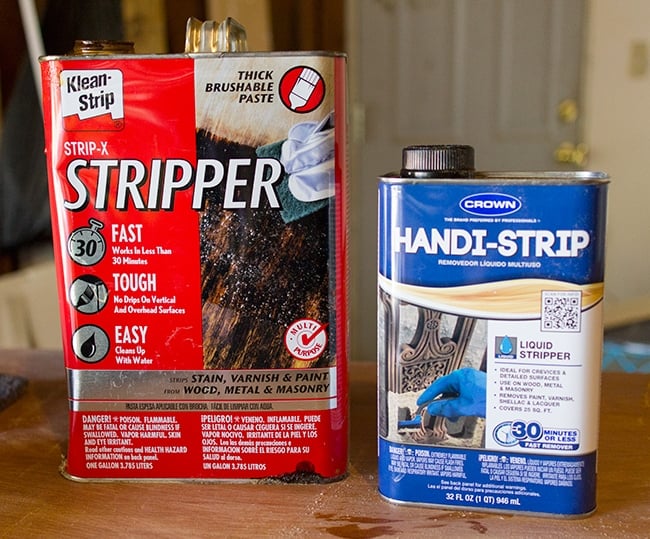
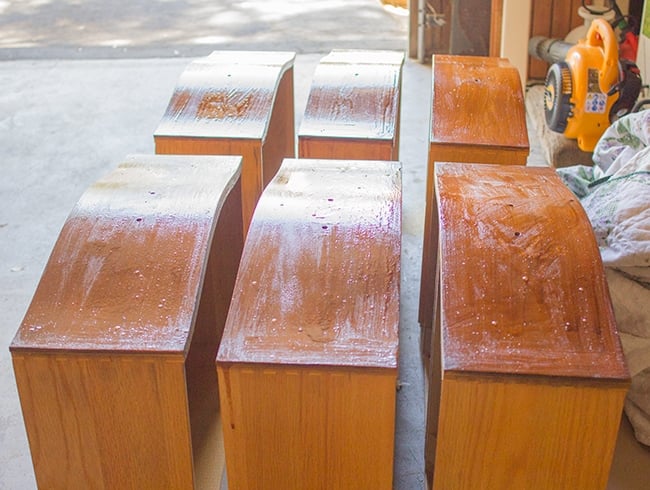
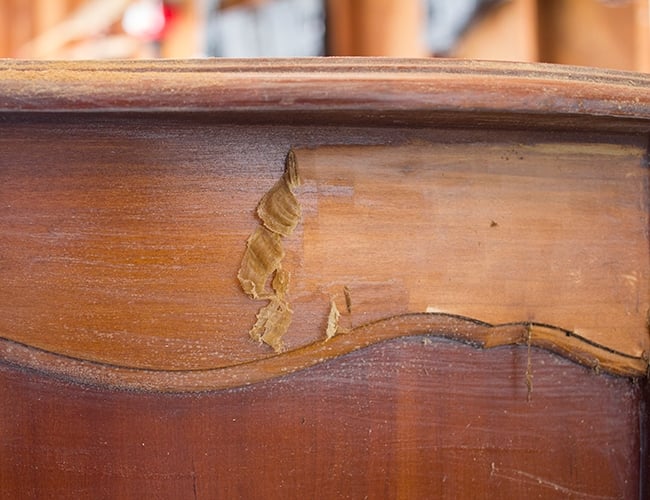
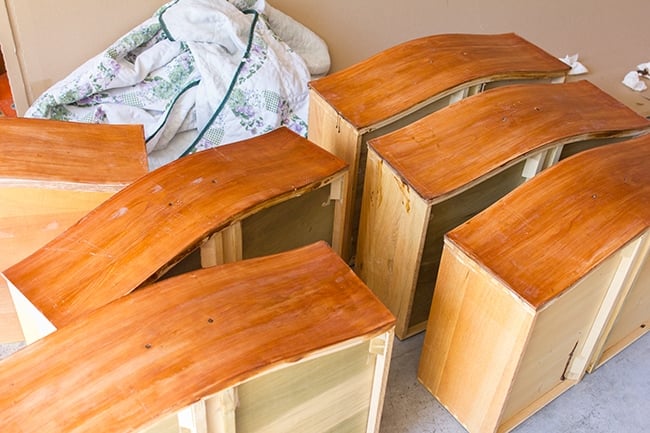
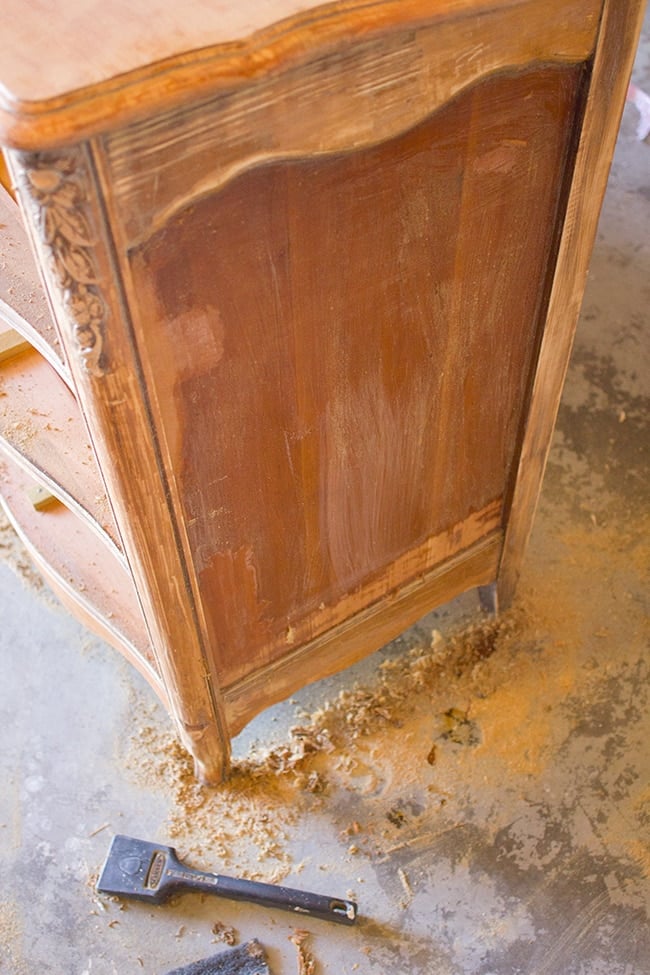
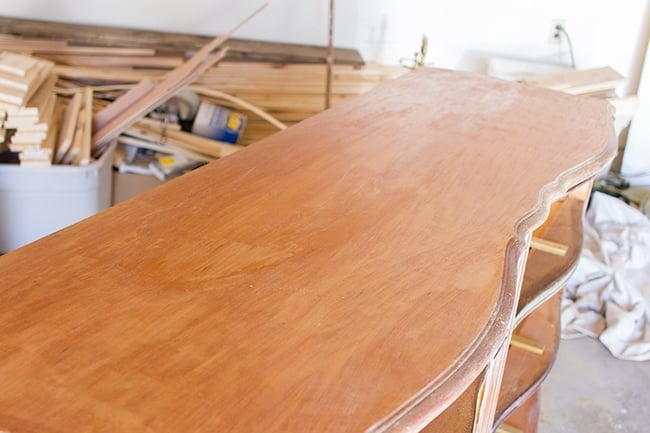
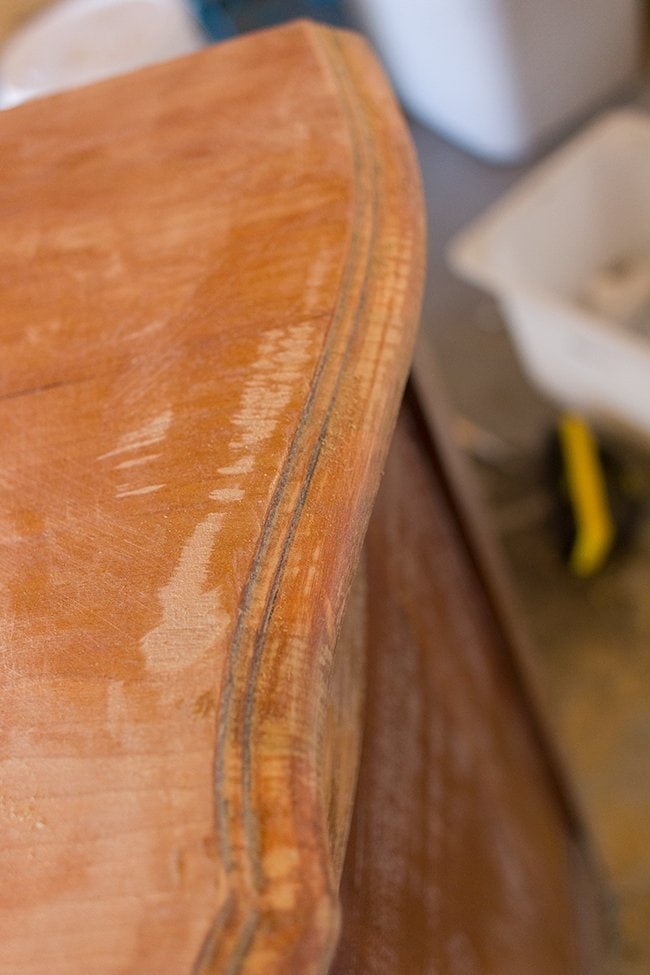
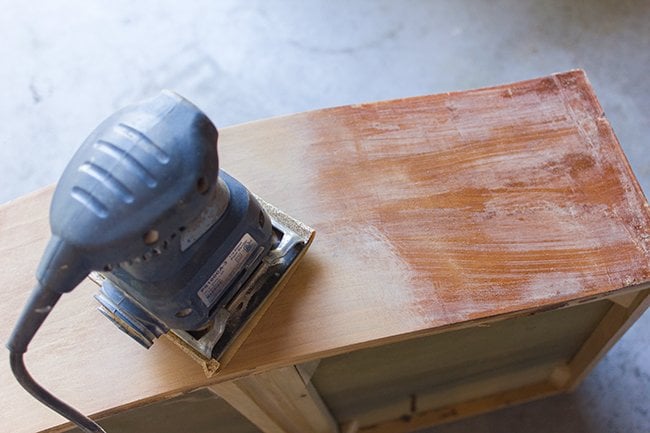
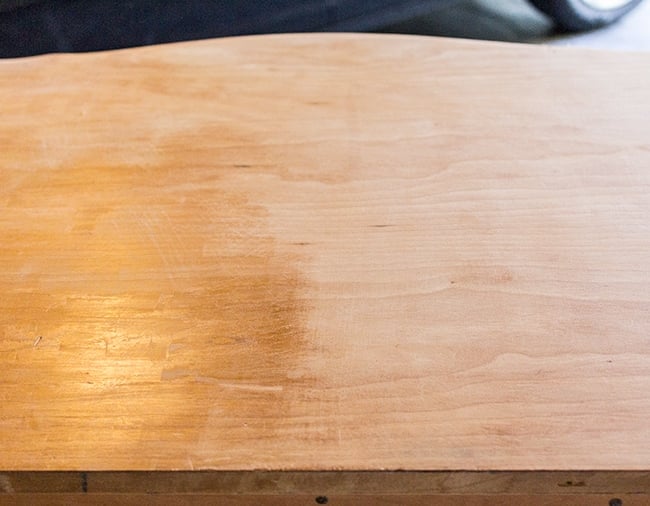
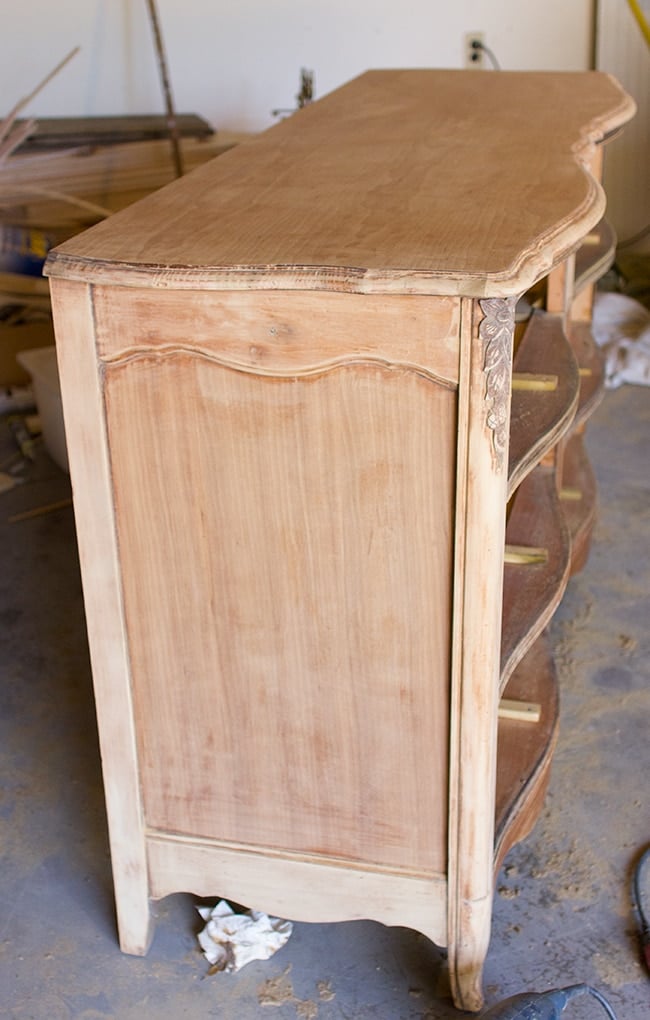
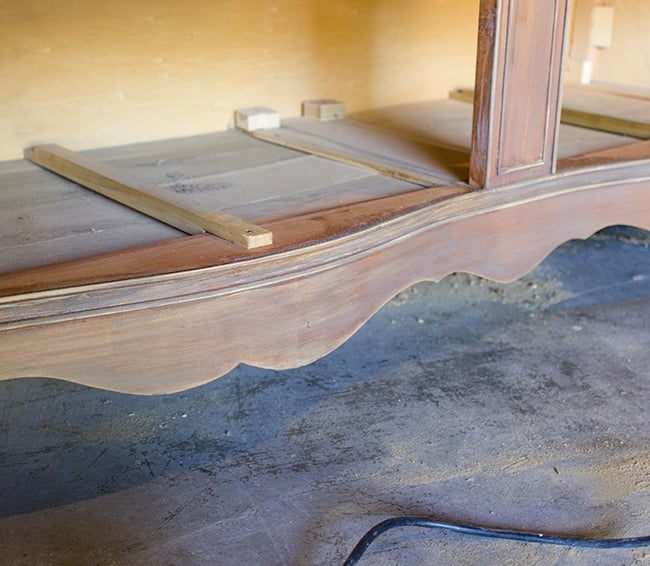
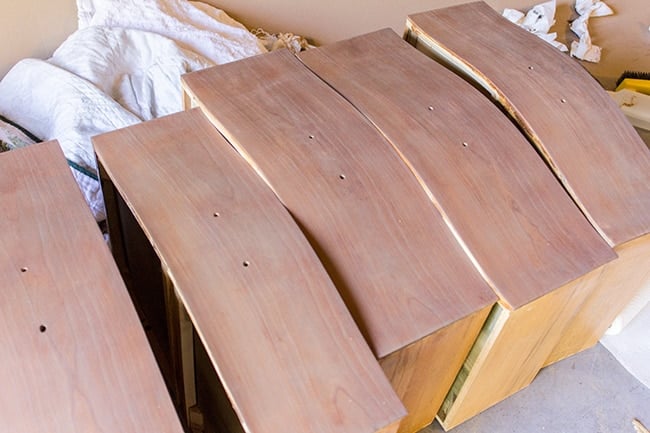

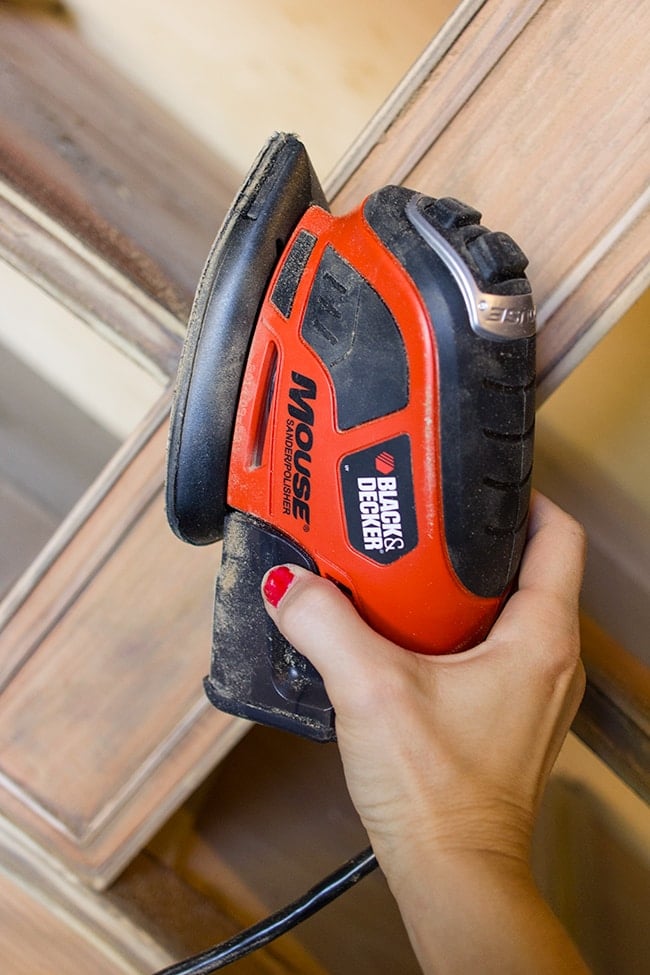
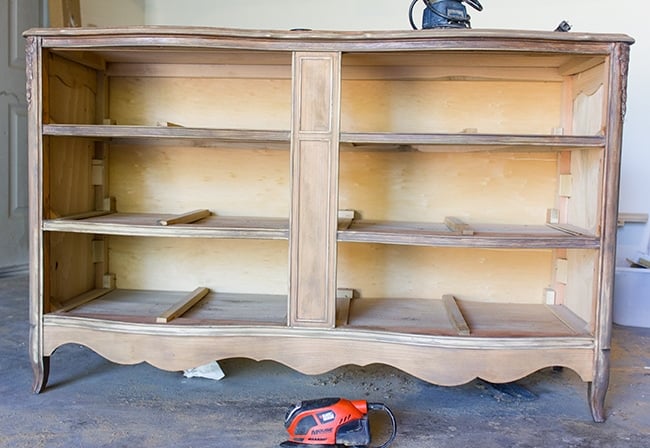
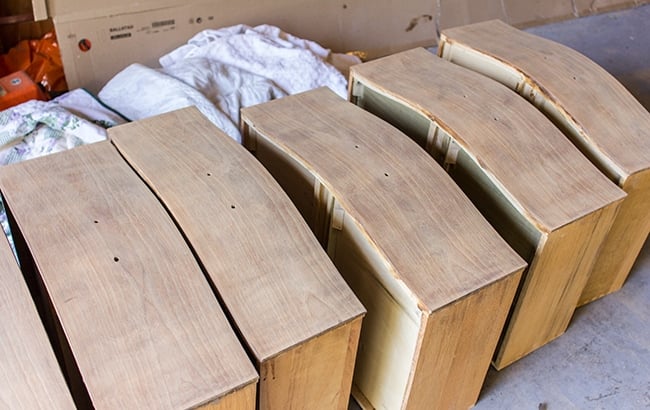
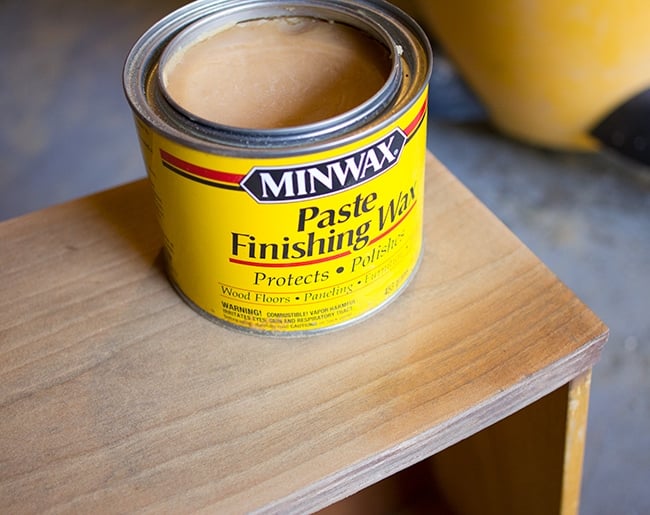
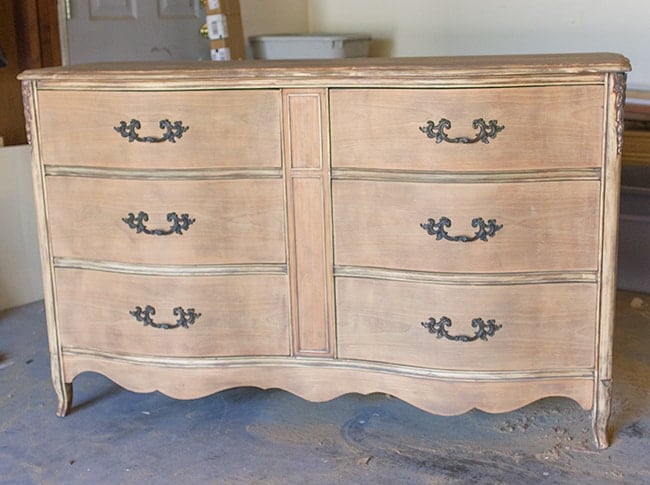


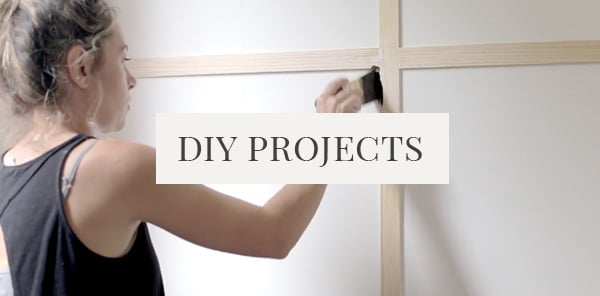
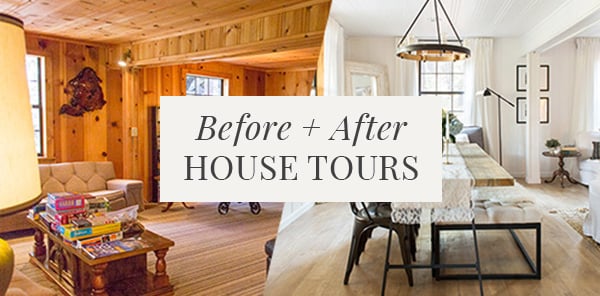



Lisa Marie Wells says
I am in love with this dresser Jenna!! I have my grandmothers dresser which is very similar but has twelve drawers!! I have worked multiple times with paint stripper and it is no picnic!!! Do you think I can get away with just sanding the piece or is stripping this type of varnish a must?? Also what grit sand paper did you use in the end??
Thank so much for your input on this!!
Jenna Sue says
I was really happy with it! It's actually in the guest room right now with Brad's clothes so we still use it. Hemnes is solid wood so it's supposed to be one of the better quality Ikea pieces. We've had it since we lived in LA so it's survived 5+ years and 3 moves like a champ!
skylinesweethearts says
How did you like your Ikea dresser when you had it, Jenna?
Cindy @Made2Style says
I'm finally getting around to catching up on all these posts and I can't believe you found the dresser you wanted! You need to play the lotto! Everything is coming together perfectly!
Jenna Sue says
Welcome to the group, I hope you'll stay a while! 😉
Anonymous says
Hi Jenna Sue!….How is it you have been around and I haven't seen your stuff before!!??? Not sure how I stumbled onto your blog, but I'm so happy I did. …actually I think I can thank Pinterest. Anyway, I love your style and ideas. I've been into decorating for fun for a long time and in a very short time today I have already picked up several cool ideas from you!! Thank you. :)…I will for sure be checking back with you for further updates. From a CALIFORNIA girl living in KS.
Jenna Sue says
Those look great, thank you for sharing!
Rucha says
I second the “use paint as stain” suggestion! I did that while ago on bare wood – wiped it on with a rag, and had a damp rag on the side to go over the painted wood as I went along, which helped wipe off excess. Worked like a charm! (if you want to check it out: https://flirtingwithdiy.files.wordpress.com/2014/05/sneak-peek-2.jpg?w=630&h=1024)You can go over it with dark wax or stain to add brown tones to the gray, but I'm not sure how well that'd work in this case, if the wood has a tendency to show red tones. I think the bare wood should pick up gray decently enough though!
Jenna Sue says
That's a good suggestion too! I've actually tried the steel wool/vinegar mixture to a piece of furniture a while back and it turned it dark black. It was wood veneer though so I'm not sure how this one would react or if it would really get rid of the red. Definitely something to consider though just in case I decide to switch it up!
Anonymous says
Hi
Just thought I'd mention a natural dye mixture I've seen used to give an aged “greyish” look to timber. It uses tea bags, vinegar and steel wool (to form an rusted iron additive). I saw it on an Australian DIY/home show. I've found a link to the segment which shows the recipe for the stain and result when it is used on pine (hope the link works):
https://au.lifestyle.yahoo.com/better-homes-gardens/tv-and-video/video/watch/23769959/tara-dennis-tea-inspired-craft-projects-ep-17-23-05-14/
However, the dresser looks lovely as it is if you decide to leave it with its natural finish.
🙂 R
Jenna Sue says
Interesting, thank you for the tip! I'll definitely try that if I decide the raw wood isn't working out for me.
Yvonne says
I had the same dilemma not long ago and by accident found a way to make paint look very rustic. Just like stain.Take a medium taupe/gray paint and VERY lightly brush it on. Sorta like dry brushing. You are not covering all of the wood. Let dry. Then take a dark glaze and apply, leave on a minute or two and use a cheesecloth to take off the excess/and to rub it in. Works for me EVERY time and the result looks much more like what your inspiration looks like.
Lisa @ Fern Creek Cottage says
I like the raw wood! It is gorgeous! I have been stalking CL for this same style of dresser, but no luck yet (at a reasonable price). When I purchased a CL buffet in this style I had high hopes to strip and stain the wood and ran into the same problem as you, red wood. It is very fusterating!
Colleen Stevens says
Wow you really went through a lot for that dresser. I love the way it turned out, and the idea that it will only get more rustic with use. I just refinished a table, my first sanding & staining type of project. It's hard work but so worth it!
-Colleen @ http://www.58waterstreet.blogspot.com
Rachel says
Looks great! I understand not wanting to keep the old reddish maple color… the “farmhouse” look will definitely go better in your room. I recently did something similar on an old sewing table I found next to a dumpster. 🙂